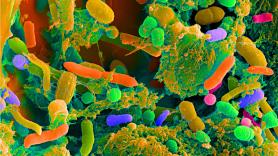3. From citizen science to systems biology
Advances in sequencing technology have allowed for new approaches to the study of the microbiome. One example is the Stick Out Your Tongue initiative, which studies the microbes living in our mouths and was explained by Toni Gabaldón, researcher at the Center for Genomic Regulation in Barcelona.
“We’ve taken high-resolution photos of the oral microbiome of healthy Spanish teenagers and seen how it changes as a result of some dietary habits,” he explained. The work established two main stoma types, which include specific bacterial communities that can be described and show some geographical variation,” he explained.
The thousands of samples were obtained through public collaboration, which in his opinion is an example showing that citizen science “offers both opportunities and challenges for microbiome research. The correlations we’ve discovered allow us to pose hypotheses that will later be tested in specific, more controlled studies.”
One key challenge is processing the huge amount of data obtained. Elhanan Borenstein, associate professor of Genome Sciences at the University of Washington, stressed that the massive amount of multi-omic information obtained normally focuses on statistical associations, often ignoring prior knowledge of mechanisms, dependence and regularities that link these different facets of the microbiome. For this reason, systems integration and multi-omic data modeling are key, developing new computing tools that include taxonomic, genomic, metagenomic and metabolomic information on the microbiome.
According to his criteria, this integration will lead to greater understanding –and on different levels- of the microbiome, both in healthy individuals and those with an illness, giving rise to microbiome-based personalized treatments.



